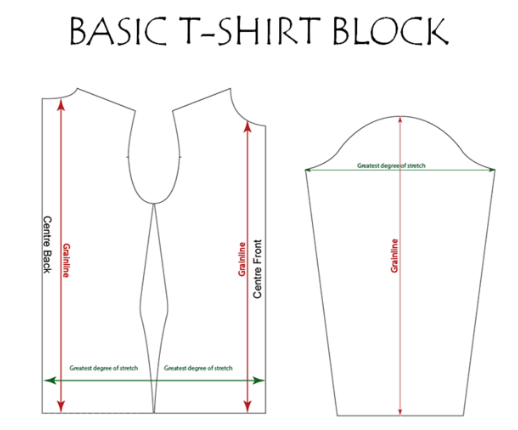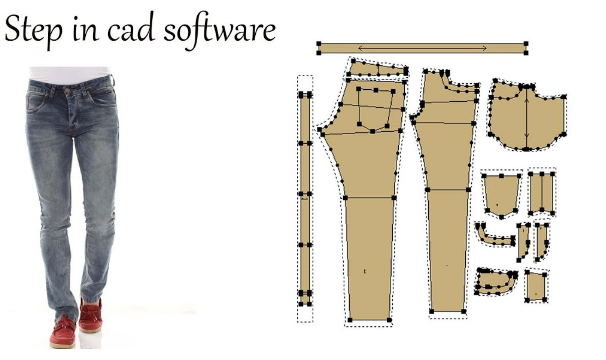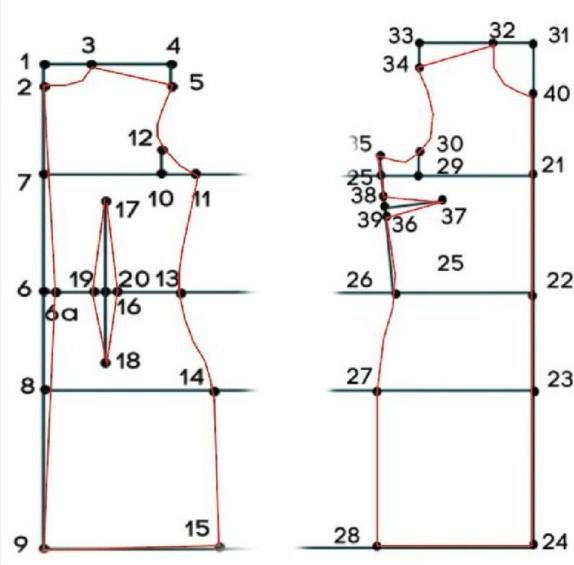Pattern making is a fundamental aspect of garment manufacturing that determines the shape, fit, and overall construction of clothing. Different clothing types require specific pattern – making techniques to achieve their unique characteristics. In this article, we will explore the common techniques used for various garment categories.
I. Techniques for Tops
A. Basic Block Pattern for T – Shirts
- The basic block pattern serves as a foundation for most tops, including T – shirts. It starts with taking accurate body measurements such as chest, waist, and shoulder width. A standard T – shirt block pattern typically consists of a front and a back piece.
- For a crew – neck T – shirt, the pattern maker creates a circular neckline shape, ensuring a comfortable fit around the neck. The sleeve pattern is usually a simple straight – tube shape with a slightly curved top to fit smoothly into the armhole. Seam allowances are added to all the edges, usually around 1 – 1.5 cm, depending on the fabric and sewing requirements.
- To create different styles, pattern makers can manipulate this basic block. For example, for a V – neck T – shirt, the neckline shape is adjusted to form a V – shape, with careful consideration of the angle and depth to maintain the integrity of the garment’s fit and appearance.
B. Dart Placement for Blouses
- Blouses often require more shaping to fit the body’s contours, especially around the bust and waist. Darts are the key technique used to achieve this. Pattern makers place darts on the front piece of the blouse to shape it around the bust area.
- The number and length of darts can vary depending on the design and the fullness of the blouse. For a fitted blouse, two or more darts may be used on each side of the front piece. The darts are carefully measured and angled to ensure a smooth transition from the bust to the waist.
- In addition to bust darts, back darts may also be added to shape the back of the blouse and provide a more tailored look. These darts help to eliminate excess fabric and create a flattering silhouette.

II. Techniques for Bottoms
A. Pattern – Making for Jeans
Jeans pattern making is a complex process that requires precision. The basic pattern includes a front and a back piece for the legs, along with a waistband and pockets. A key technique is the shaping of the crotch area.
- The crotch curve is carefully designed to provide comfort and freedom of movement. The front crotch curve is generally shallower than the back crotch curve to accommodate the different body shapes in that area.
- Pocket patterns are another important aspect. For traditional jeans, there are usually five pockets: two front pockets, two back pockets, and a small coin pocket. The front pocket pattern is designed to have a slanted shape and a certain depth to allow for practical use and a stylish look. The back pocket pattern can vary in shape and size, from the classic rectangular shape to more elaborate designs such as a curved or angled shape.
B. Skirt Patterns
- For a straight – skirt pattern, the starting point is usually the measurement of the waist and hips. The pattern consists of a front and a back piece that are wider at the hips and taper towards the hem.
- Gathers or pleats are common techniques used to add fullness to skirts. For a gathered skirt, the pattern maker calculates the amount of fabric needed to create the gathers. This involves determining the ratio of the gathered fabric to the flat fabric. For example, a skirt might have a 2:1 ratio, meaning that the width of the fabric at the waist is twice the width of the flat waist measurement.
- Pleated skirts, on the other hand, require precise folding and stitching of the fabric. There are different types of pleats, such as box pleats, knife pleats, and accordion pleats. Each type has its own pattern – making requirements. For box pleats, the pattern maker creates a fold in the fabric that is folded both ways to form a box – like shape, with a specific width and depth determined by the design.

III. Techniques for Dresses
A. Fitted Dress Patterns
- Fitted dress patterns combine the techniques used for tops and bottoms. The bodice pattern is similar to that of a blouse, with careful dart placement to shape the bust and waist. The skirt part of the dress can be a straight skirt or a flared skirt, depending on the design.
- For a mermaid – style dress, the pattern is designed to hug the body from the bodice through the hips and then flare out dramatically from the knees or lower. This requires precise shaping of the pattern pieces and seamless transitions between the different sections. The pattern maker uses a combination of darts, seams, and sometimes boning (for added structure) to achieve the desired fit.
- To ensure a smooth fit around the shoulders and arms, the sleeve pattern is carefully drafted and attached to the bodice. The length and style of the sleeves can vary, from long – sleeved, three – quarter – sleeved, to sleeveless, each with its own pattern – making considerations.
B. Wrap Dress Patterns
- Wrap dresses have a unique construction. The pattern for a wrap dress typically consists of two main pieces that cross over each other at the front. The neckline and the wrap – around part are carefully designed to provide a flattering and adjustable fit.
- The pattern maker needs to consider the overlap of the two pieces to ensure that the dress stays in place and covers the body appropriately. A key technique is the use of ties or a button – and – loop closure to secure the wrap. The length of the ties and the position of the closure are crucial for the functionality and appearance of the dress.
- Additionally, the skirt part of the wrap dress can be adjusted in width and length according to the design. It can range from a knee – length A – line skirt to a long, flowing maxi – skirt.

Pattern – making techniques vary widely depending on the clothing type. These techniques are essential for garment manufacturers to create clothing that not only looks good but also fits well and functions properly. By understanding and applying these common techniques, manufacturers can produce a diverse range of high – quality garments to meet the demands of different customers and fashion trends.

